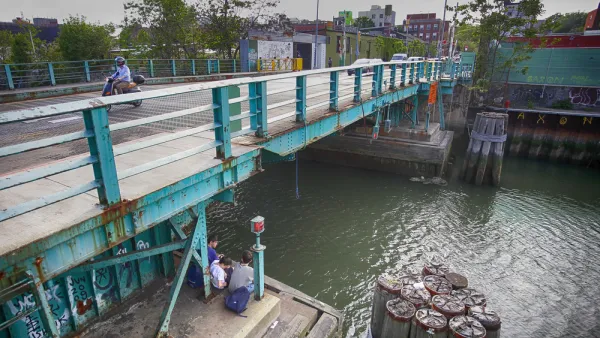California Governor Brown's proposal to streamline affordable housing may cause more problems than it solves, both for affordable housing and community planning, argues Murtaza Baxamusa who teaches planning at USC and develops affordable housing.
Governor Brown’s proposal for "Streamlining Affordable Housing Approvals" in California proposal is based on removing local planning discretion and California Environmental Quality Act (CEQA) review from the process applicable to certain multi-family residential development. It's sure to please some multi-family housing developers, particularly because, to qualify, projects need merely:
. . . to limit market-rate (not “affordable”) units to between 80-95 percent of their projects, build on parcels that have urban uses around them on sites zoned for residential uses, and avoid dangerous and sensitive sites where they should not be building in the first place.
However, the proposal has negative consequences for the planning process and planners themselves, and ultimately, unintended negative consequences for affordable housing goals, argues Murtaza Baxamusa, a San Diego based planner and affordable housing developer. Among other things, communities will likely become much more distrustful of the planning process, thereby exacting more stringent and inflexible general plan and zoning standards. Planners who will be granting many more approvals on a ministerial basis will be the focus of community ire and pressure. The proposal would do nothing to address one of the largest impediments to affordable housing: zoning which disallows multi-family housing. Baxamusa writes:
According to the Governor, the intent is to streamline affordable housing. But affordable housing projects are already streamlined, per state law. The proposal has received a mixed reception from affordable housing advocates. This is because many affordable housing advocates are concerned that it silences the voices of residents and neighbors, at the time that it matters the most: during the permitting of a project that will impact their lives. Some advocates are puzzled by the fact that the Governor’s proposal lowers affordability standards for projects that need it the most, when they are near transit lines. Advocates in urban areas often use the public input process to include more below-market units and other community benefits. Since the proposal only applies to land zoned for multifamily housing, it does not advance building affordable housing in counties like Marin, where there is virtually no land zoned for it.
For more of Baxamusa's thoughts on Gov. Brown's proposal, see the source article.
FULL STORY: Why Gov. Brown’s housing plan is bad for planning

Analysis: Cybertruck Fatality Rate Far Exceeds That of Ford Pinto
The Tesla Cybertruck was recalled seven times last year.

National Parks Layoffs Will Cause Communities to Lose Billions
Thousands of essential park workers were laid off this week, just before the busy spring break season.

Retro-silient?: America’s First “Eco-burb,” The Woodlands Turns 50
A master-planned community north of Houston offers lessons on green infrastructure and resilient design, but falls short of its founder’s lofty affordability and walkability goals.

Test News Post 1
This is a summary

Analysis: Cybertruck Fatality Rate Far Exceeds That of Ford Pinto
The Tesla Cybertruck was recalled seven times last year.

Test News Headline 46
Test for the image on the front page.
Urban Design for Planners 1: Software Tools
This six-course series explores essential urban design concepts using open source software and equips planners with the tools they need to participate fully in the urban design process.
Planning for Universal Design
Learn the tools for implementing Universal Design in planning regulations.
EMC Planning Group, Inc.
Planetizen
Planetizen
Mpact (formerly Rail~Volution)
Great Falls Development Authority, Inc.
HUDs Office of Policy Development and Research
NYU Wagner Graduate School of Public Service




























